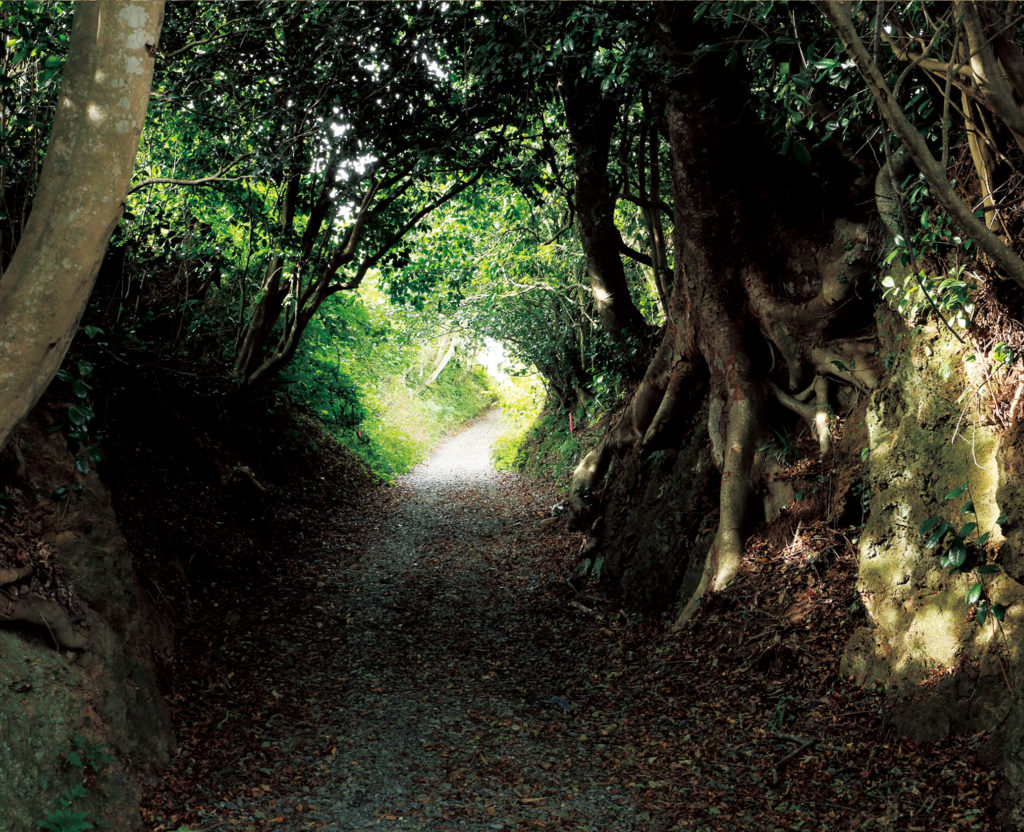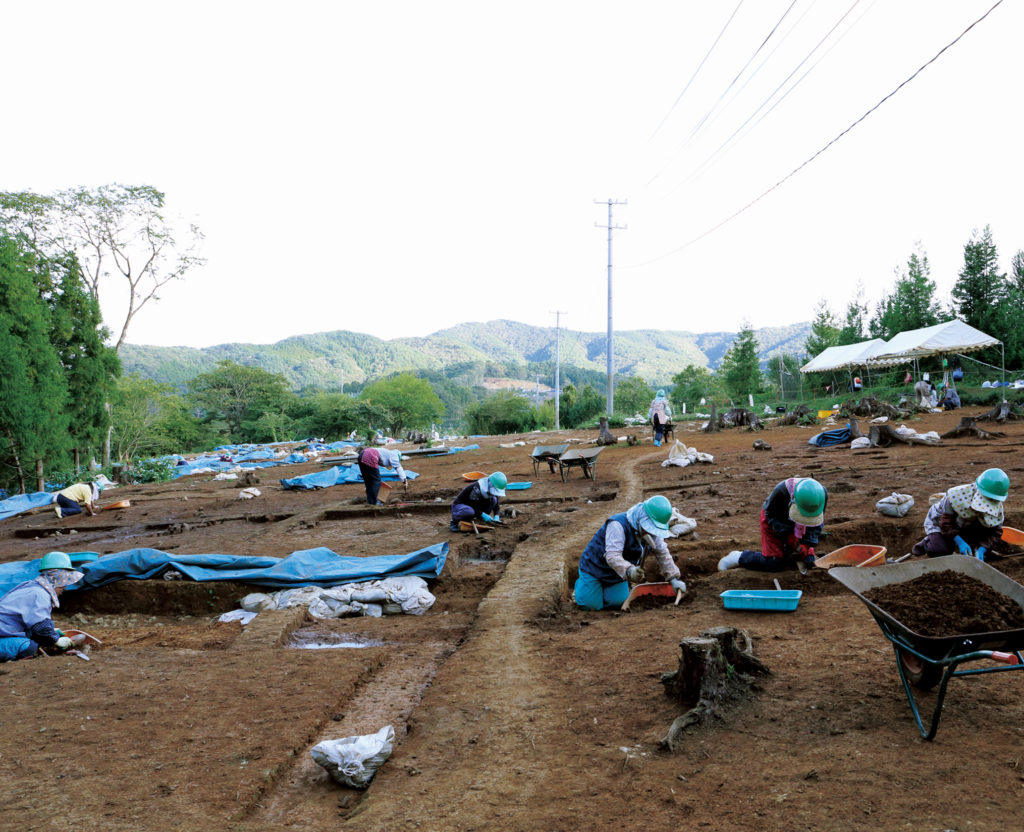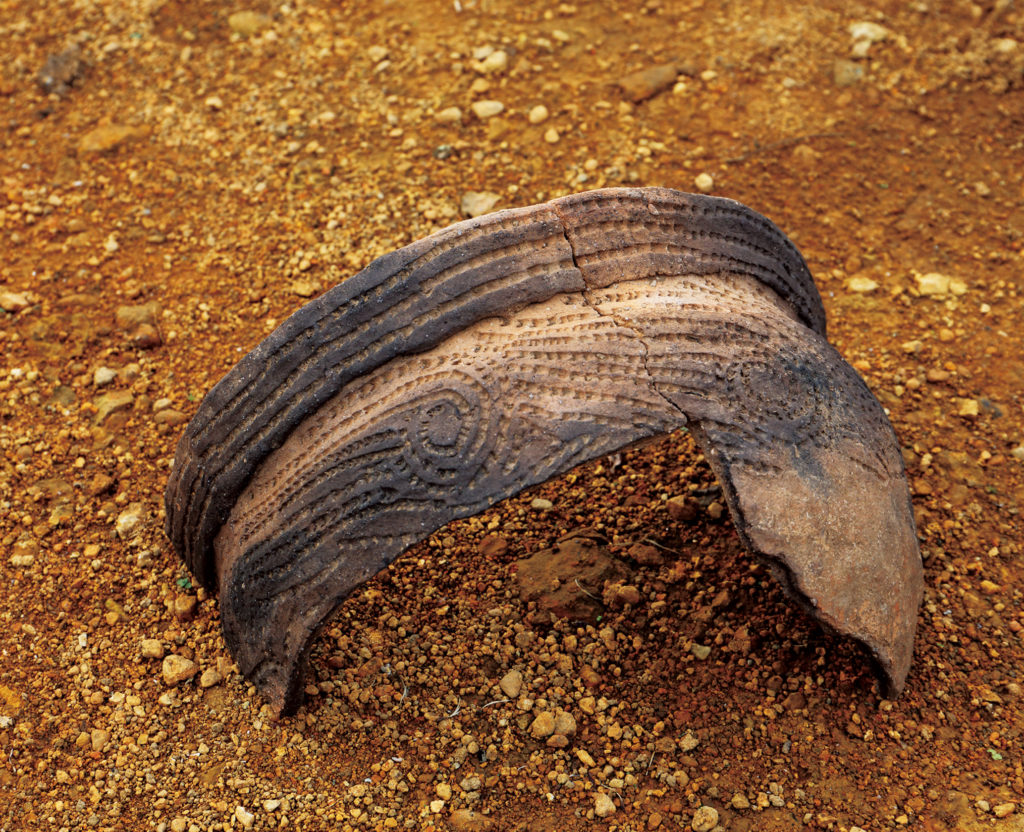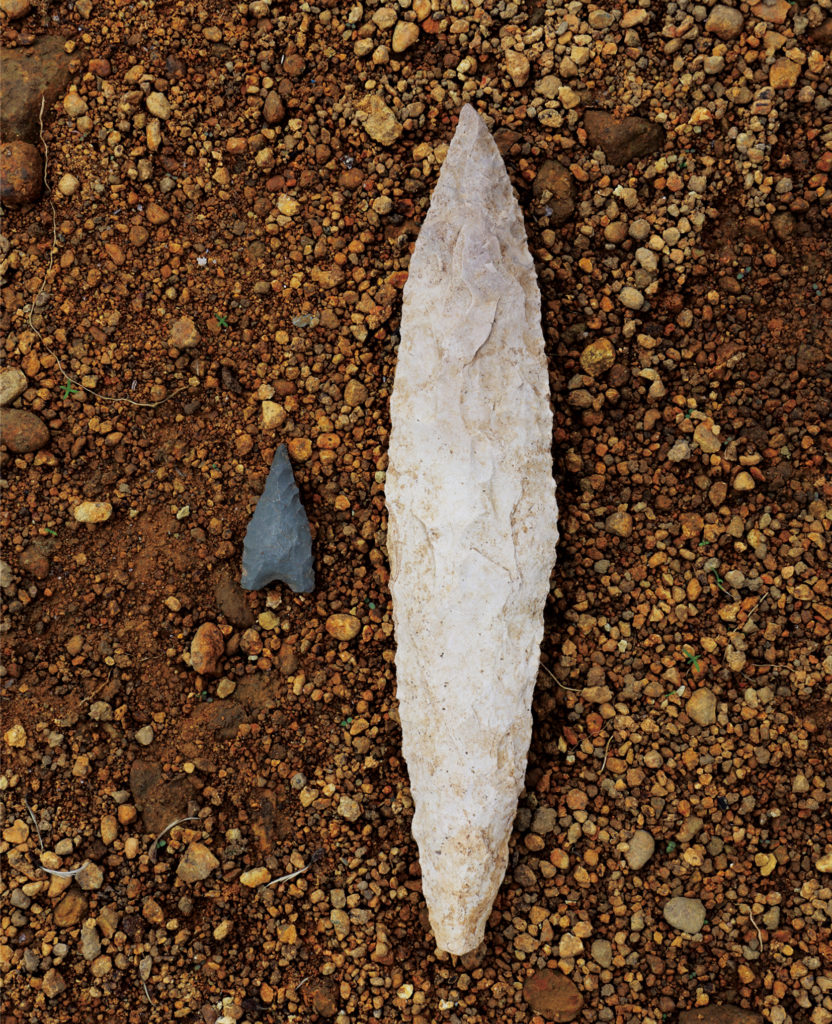Homecoming to a Jomon Hill
I ducked through the tunnel of vegetation, captivated by the trees standing with their roots laid bare, and emerged on a small hill. It’s funny how coming from a closed dim path that opens out on a destination makes one feel as though one has traveled back in time. This hill is about a 10-minute climb from the Goishi Coast along Ofunato Bay in Iwate Prefecture. For some time, it has been known by the neighbors to produce Jomon pottery.
My visits started after the Great East Japan Earthquake of 2011 devastated the Tohoku region of northeastern Japan. Many people here depend on the ocean for their livelihoods, and yet lost their lives and homes to the quake-triggered tsunami. This gave me some food for thought. My initial question was simple: Where is the ideal place for humans to live? I returned to the Tohoku region time and again, but no matter how many seasons came and went, there were no answers in sight. Because I had lost my own family home in Kobe to the Great Hanshin–Awaji Earthquake of 1995, I knew the uncertainty of tomorrow in a disaster-stricken area, and the question continued to consume my mind and body.

One season, as I was still wandering in the haze, a turning point arrived. Reconstruction plans were under way across the Tohoku region, and a project was being carried out in Ofunato City toward moving groups of residents to several new districts. Preparing higher ground for relocation would involve cutting through woods and bushes. I pictured people who lost their houses by the earthquake discovering many a dwelling site of the Jomon people in the process. I called the prefectural authorities and asked whether any district at an elevation overlapped with a Jomon archaeological site. Sure enough, fragments of cord-marked pottery had turned up in multiple areas and brought the construction work to a halt. This was how I came upon the Minegishi site.
My first visit was on a mid-June day when the rain had let up and the earth was muddy. I asked to see the northern slope, where pieces of pottery had been unearthed. Mr. Fukushima, a researcher and my guide, felt the ground with a warm gaze and said the soil tells him there is no sign that the tsunami reached this level following the Jogan Earthquake of 869. Once he peels back the layers of earth, he will know more. Having promised to see him again, I left Minegishi.

When I returned in early October, excavation was well under way with some 40 field workers being on site every day. Countless dwelling sites and pits that were likely used for storing food had been found, dating back to the Early Jomon period (ca. 6,000–5,000 years ago). Pathless though the site may be, it felt as if I were strolling in a Jomon village. I wove my way through the field workers and stopped at one dwelling site. The soil in the center had changed to a red color. The residents probably made a fire, said another researcher, Mr. Hoshi. This may have been a furnace, since the ground is scorched. More digging into the area’s history should reveal the length of time that the Jomon people lived here. I looked forward to the team’s excavation report.

Mr. Fukushima was standing at the edge of the site looking out on the ocean. I took a brief pause before asking him about his view now, after a summer’s worth of work. He turned his gaze to Ofunato Bay before speaking. This site is an ideal place to live. The sea breeze flows through and yet the gentle slope keeps the area dry. We humans had a sharp sensibility long ago but left it behind somewhere. That may be why we are vulnerable to external risks. All the while Mr. Fukushima was excavating the hill, his heart was with the people’s lives beyond.
Excavation of the Minegishi site will come to a close at the end of October. The 21 houses schedule to be built here will attract people back to the hill—to the former village of the Jomon people.
<PAPERSKY no.43(2013)>

Jomon Fieldwork | Nao Tsuda × Lucas B.B. Interview
A conversation between ‘Jomon Fieldwork’ Photographer and writer Nao Tsuda and Papersky’s Editor-in-chief Lucas B.B. The two discuss the ways Jomon culture continues to play an important role in modern day Japan. The video was filmed at Papersky’s office in Shibuya in conjunction with Tsuda’s exhibition “Eyes of the Lake and Mother Mountain Plate” held at the Yatsugatake Museum in Nagano.
Nao Tsuda | Photographer
Through his world travels he has been pointing his lens both into the ancient past and towards the future to translate the story of people and their natural world.
tsudanao.com











